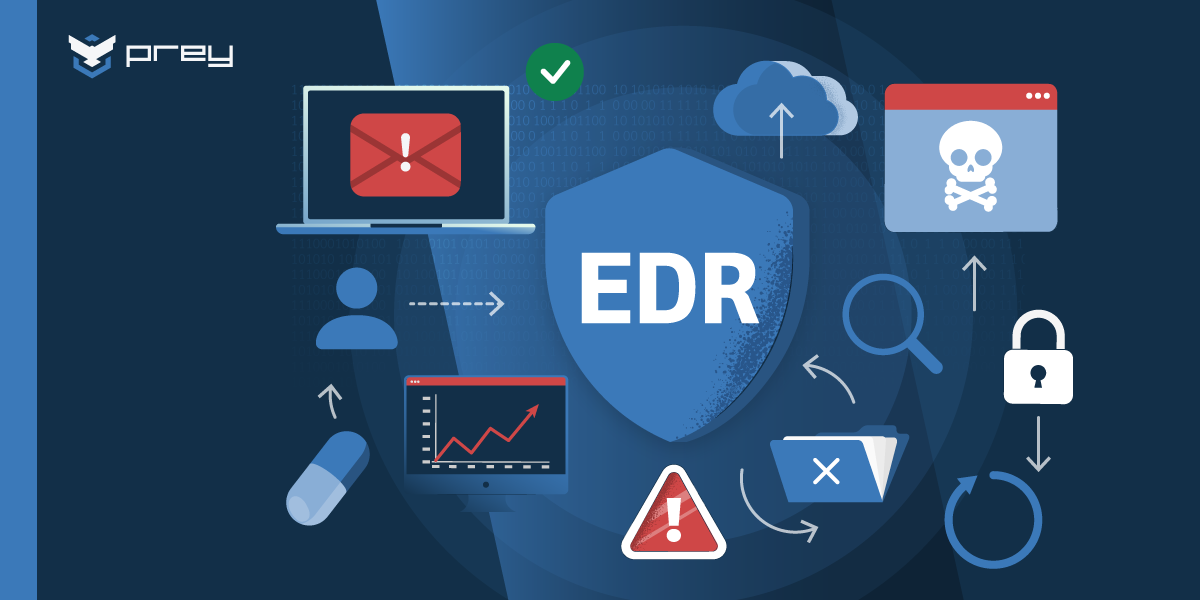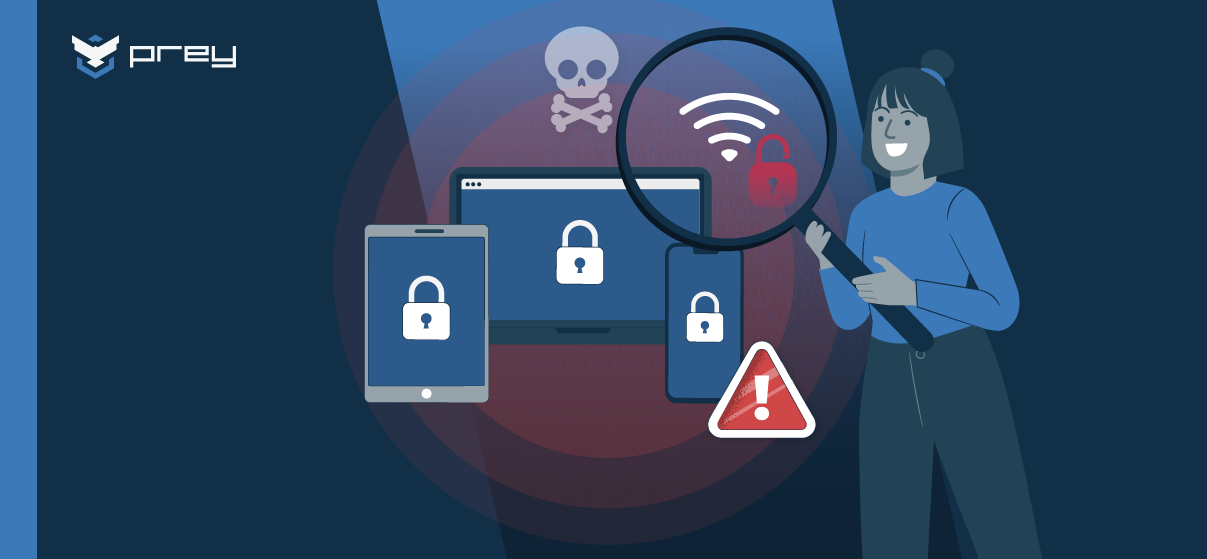What is endpoint security?
Endpoint security (simply put) is a combination of practices that aim to protect the endpoint from malicious actors is an extremely important area of IT security. These practices range from installing anti-virus software to threat detection at the endpoint to digital forensics. Mostly, though, the term “endpoint security” connotes the overwhelming need for security at the endpoint—however it’s done.
Why is endpoint security important?
Endpoint security is important because any network-connected device exposes itself to multiple threat vectors. According to a 2024 report by Unit 42, there was a 49% year-over-year increase in ransomware attacks posted on leak sites, demonstrating the rising threat level faced by endpoint devices. Additionally, a Ponemon Institute survey revealed that 55% of IT professionals consider smartphones to be among their most vulnerable endpoints, reflecting the growing concern over endpoint security.
Despite this awareness, many organizations still struggle with their endpoint security posture. A Sophos report from 2024 highlights that 59% of organizations were hit by ransomware in the past year, with 70% of these attacks resulting in data encryption. Shockingly, 75% of organizations that suffered ransomware attacks were running up-to-date endpoint protection, underscoring the need for more robust and comprehensive security measures.
How endpoint protection works
Endpoint protection functions by securing all devices—such as computers, smartphones, and tablets—that connect to a network. It involves a combination of technologies and practices designed to detect, prevent, and respond to security threats targeting these endpoints.
At its core, endpoint protection operates by monitoring and controlling activities on the device. This includes scanning for malicious software, blocking unauthorized access, and enforcing security policies. Modern endpoint protection platforms (EPP) integrate advanced features like machine learning and behavioral analysis to identify and neutralize threats in real time, even those that have never been seen before (zero-day attacks).
In addition to these proactive measures, endpoint protection often includes response capabilities, such as isolating infected devices from the network to prevent the spread of malware. It also provides detailed analytics and reporting to help IT teams understand and mitigate threats more effectively.
Essential endpoint security components
Endpoint security solutions are highly varied, depending on the risk they are trying to mitigate. The following are some of the most common endpoint security components:
Device Protection
Software that defends the device itself from operating system takeover. In some cases, device protection will also involve shielding firmware from unauthorized updates. Keeping endpoints patched is essential to keep them safe from known exploits.
Network Controls
The network can reveal an endpoint attack even if it is not readily visible on the endpoint itself. This may emerge from increased or suspicious network traffic at the endpoint.
Application Controls
Applications running on the endpoint need protection from attackers. Application controls can do things like enforce two-factor authentication (2FA) for application users at the endpoint.
Data Controls
Endpoints are usually both the entry and exit points for data breaches. The hacker uses one endpoint to gain access to data and then uses a different endpoint to exfiltrate stolen data. Data controls make this harder to do by restricting data access and export.
Browser Protections
Given the prevalence of web phishing attacks, e.g. malicious URLs, browser protections can help defend endpoints by restricting access to suspicious URLs or creating an isolated “sandbox” where they can “explode” URLs before letting any data from the website on the endpoint.
The question “What is Endpoint Security?” seems innocent enough, but answering it triggers a few complex conversations. These span hardware and software, network architecture, network security, and more. This article offers some insights, and hopefully some clarity, on this deceptively simple issue.

What are the benefits of endpoint security?
For organizations, particularly in the B2B space, endpoint security is a critical component of a comprehensive cybersecurity strategy. As the number of connected devices grows, so do the vulnerabilities that can be exploited by cybercriminals. Here’s why endpoint security is essential and the benefits it provides:
1. Protection Against Sophisticated Threats
Modern cyber threats are more sophisticated and harder to detect than ever before. Endpoint security solutions are designed to combat these advanced threats by utilizing cutting-edge technologies such as machine learning and behavioral analysis. This allows organizations to detect and neutralize threats in real-time, even those that are unknown or zero-day attacks. By securing endpoints, organizations can protect sensitive data and reduce the risk of breaches that could result in significant financial and reputational damage.
2. Comprehensive Coverage Across All Devices
Organizations often have a wide array of devices connected to their networks, including desktops, laptops, mobile devices, and even IoT devices. Endpoint security solutions provide comprehensive coverage across all these devices, ensuring that no endpoint is left unprotected. This is particularly important as remote work becomes more prevalent, increasing the number of devices accessing corporate networks from outside the traditional perimeter.
3. Reduced Risk of Data Breaches
Data breaches can have devastating consequences for businesses, leading to financial losses, legal liabilities, and damage to customer trust. Endpoint security reduces the risk of data breaches by implementing robust protection mechanisms at the device level. This includes encryption, access control, and continuous monitoring, which together prevent unauthorized access to sensitive information.
4. Enhanced Compliance and Regulatory Adherence
Many industries are subject to stringent data protection regulations, such as GDPR, HIPAA, or CCPA. Endpoint security helps organizations comply with these regulations by ensuring that all devices accessing sensitive data adhere to security policies and standards. This reduces the risk of non-compliance penalties and helps organizations maintain a strong security posture in the eyes of regulators.
5. Streamlined Incident Response
When a security incident occurs, the speed and efficiency of the response can determine the extent of the damage. Endpoint security solutions often include automated incident response capabilities, such as isolating compromised devices from the network, alerting IT teams, and initiating remediation processes. This streamlined response helps to contain and mitigate threats quickly, minimizing disruption to business operations.
6. Cost Savings through Prevention
Investing in endpoint security can lead to significant cost savings for organizations. By preventing breaches and minimizing the impact of security incidents, organizations can avoid the high costs associated with data loss, system downtime, legal fees, and damage to brand reputation. Furthermore, with advanced endpoint security solutions in place, IT teams can focus on strategic initiatives rather than constantly firefighting security issues.
7. Scalability to Meet Growing Business Needs
As organizations grow, their IT infrastructure becomes more complex, with an increasing number of endpoints that need protection. Endpoint security solutions are designed to scale alongside business growth, providing consistent protection without compromising performance. This scalability ensures that organizations can maintain a robust security posture, regardless of the size or complexity of their network.
Can endpoints be vulnerable?
Endpoints embody a number of vulnerabilities. Hackers have different objectives when they attack an endpoint. In some cases, their goal is to take over the endpoint’s operating system. That way, they can use the endpoint as a staging area for penetration of the network. At other times, the attacker might want to spy on the endpoint’s user in order to steal network login credentials. With the credentials in hand, the hacker can log into the network without arousing any suspicion.
The typical attack chain for an endpoint involves installing malware on the device. In most cases, this occurs when the endpoint user clicks on a malware-bearing link or downloads malware in a file, such as a PDF document. To the end user, it’s as if nothing has happened. Indeed, the attacker wants the endpoint user to continue on with his or her work so they can use a functioning, but compromised endpoint to breach the network.
Challenges for reemote endpoint security
Remote work creates a few wrinkles for endpoint security. In some cases, a remote worker is relying on a personal machine for work, so the company has to provision endpoint protection software that is compatible with the user’s personal device–and make sure they’re using it.
Remote device authentication is also part of the endpoint protection mix in this scenario, even if it’s not about endpoint security solutions per se. Being able to authenticate a remote worker is a critical step in ensuring endpoint protection. Without strong authentication, a malicious actor could impersonate the remote worker and breach the network by establishing a fake but realistic-looking endpoint.
For remote workers who do sensitive work like system administration or financial transactions, some companies have even taken the step of provisioning a dedicated remote access device. This might be a PC that’s “hardened” and unable to download files or read emails. It can only log into privileged, protected sub-networks. Some vendors have even created a single PC with a split regular/hardened pair of virtual machine operating systems as a way to provision a privileged device that’s also convenient for standard corporate work.

FAQs
1. What is the Difference Between Endpoint Security and Antivirus Software?
Antivirus software focuses on detecting and removing malware from individual devices, while endpoint security offers broader protection by securing all devices on a network, including features like firewalls, encryption, and intrusion detection.
2. Why is Endpoint Security Critical for Remote Workforces?
Endpoint security is crucial for remote workers because it ensures that all devices, even those used outside the office, are protected from cyber threats, safeguarding sensitive data and maintaining network security.
3. How Does Endpoint Security Support Regulatory Compliance?
Endpoint security helps organizations meet regulatory requirements by enforcing data protection policies, such as encryption and access control, ensuring compliance with laws like GDPR and HIPAA.
4. What Are the Key Features to Look for in an Endpoint Security Solution?
Look for features like real-time threat detection, encryption, patch management, device control, and scalability to ensure comprehensive protection for all your network’s endpoints.






